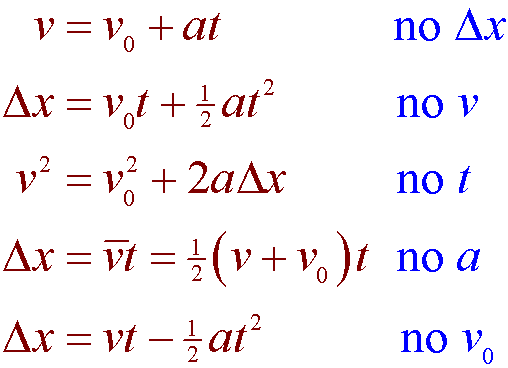Sensational Acceleration Kinematic Equation

Δ x t.
Acceleration kinematic equation. Original velocity the velocity at the start of the acceleration. They can never be used over any time period during which the acceleration is changing. V u a t.
There are many cross links in the discussions that follow. First Equation Of Motion. Apply one-dimensional kinematic equations to situations with no acceleration and positive or negative constant acceleration.
By definition acceleration is the first derivative of velocity with respect to time. Typically the kinematic formulas are written as the given four equations. V2 2 a Δ x.
Even our kinematic equations calculator uses the following four equations to find the unknown variables. We know that acceleration is approximately -98 ms2 were just going to use -98 so the math is easier and we know that acceleration is the derivative of velocity which is the derivative of position. V v0 at.
The equations can be utilized for any motion that can be described as being either a constant velocity motion an acceleration of 0 mss or a constant acceleration motion. Kinematic equations are introduced as we solve for stopping time and displacementFor. Final velocity the velocity at the end of the acceleration.
We usually start with acceleration to derive the kinematic equations. Kinematics equations require knowledge of derivatives rate of change and integrals. Kinematics Equations for Accelerated Motion.













